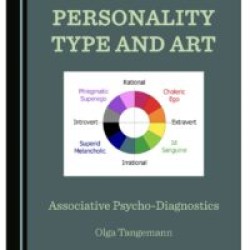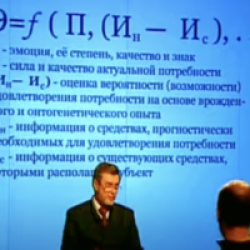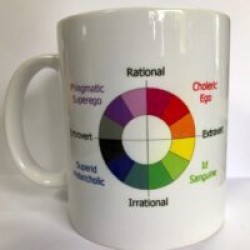The foundations of socionics – a review Karol Pietrak
Institute of heat engineering, Warsaw University of Technology Nowowiejska 21/25, 00-665 Warsaw, Poland, e-mail: kpietrak@itc.pw.edu.pl
Abstract
The paper discusses the foundations of the theory of socionics, including the rationale behind Aušra Augustinavičiūtė’s model of the information processing by the human psyche, and the philosophical thought behind the concept of information elements. Socionics may be regarded as the equivalent of Myers-Briggs Type Indicator typology of personality developed in the countries of former USSR. The main goal of the paper is to present its origins to English-speaking community. The attractive aspect of socionics theory is its explanatory potential in fields of interpersonal communication and psychological disorders. Among presented issues are the aspects of Jungian analytical psychology and Kępiński’s information metabolism, upon which Augustinavičiūtė based her model. After derivation of the model, its theoretical implications are shortly discussed.
Keywords: cognitive psychology; cybernetics; personality typology;
1. Introduction
In 1980s, Lithuanian psychologist Aušra Augustinavičiūtė wrote several papers collected and published in 1998 as the book entitled “Socionics. Introduction” (Augustinavičiūtė, 1998). In these writings, she laid down the foundations of the new theory of information processing in the psyche and its exchange between the members of society. The name given by her to this new model is socionics. As explained by Augustinavičiūtė, it is the combination of two words – “society” and “bionics”. Bionics is understood as examining biological phenomenology in the hope of gaining insight and inspiration for developing physical or composite bio-physical systems in the image of life (Vincent, Bogatyreva, Bogatyrev, Bowyer, & Pahl, 2006). Indeed, the model proposed by Augustinavičiūtė has characteristics of a cybernetic system, while it is built upon the analysis of the interaction of a living organisms (especially humans) with the rest of environment.
The work of Augustinavičiūtė is based on the findings of Freudian psychoanalysis (Freud, 1915, 1920, 1923), Jungian analytical psychology (Jung, 1946) and the concept of information metabolism devised by Polish psychiatrist Antoni Kępiński (Kępiński, 1972, 2012, 2013, 2014). With unique insights form Kępiński and her own practice with patients, Augustinavičiūtė could add details to the functional model of the psyche
proposed by Carl Jung in his famous work on psychological types. In such way, a highly systematic description of information processing by the psyche came into being, together with powerful typology of personality and theory of social interactions.
In the West, the work of Jung evolved into the Myers-Briggs Type Indictaor (Myers, 1962), which became very popular tool for psychometrics in areas of business and personal development. Since 1980s, the theory of socionics have been developed in the countries of former USSR, especially Russia and Ukraine. The interest in works of Augustinavičiūtė resulted in establishing of 2 socionics-centered institutes (International Institute of Socionics located in Kiev and The Scientific Research Socionics Institute located in Moscow). Many socionic experiments were conducted even before the formation of larger research centers by the originator of the theory and her colleagues from medical and scientific circles. The experiments usually involved determination of psychological types (by the method of questionnaire and interview) for some greater sample of people and observation of their interactions. The results of some of these experiments were published in Russian (Reinin, 2005).
It has to be said that socionic model offers a lot more than MBTI typology, as it allows not only to specify the psychological type of an individual, but also to predict problems in interactions with other people and society to greater extent than MBTI (Augustinavičiūtė, 1998). Despite very high predictive potential, socionics fails to gain greater interest in western psychological community. The comparison of google trends for searches related to two topics – socionics and MBTI is shown in Figure 1. The interest in MBTI is on average 7.6 times greater than interest in socionics, yet the latter subject dominates in the countries of former USSR. Popularity of MBTI typology can be related to its simplicity. Models of types and the diagnostic tests are much less complex within the MBTI system. Another reason for the advantage of MBTI in the West is language barrier and previous political barriers. Original writings of Aušra Augustinavičiūtė and her close collaborators are available only in Russian, and some are not yet digitalized. The osmosis of these concepts through the iron curtain was highly suppressed. Another distinct aspect of socionics is its philosophical and scientific foundation, which often seems unclear to Westerners.
This paper addresses two of the abovementioned problems. Firstly, its aim is to expose Augustinavičiūtė’s thought that was behind the fundamentals of her model to the English-speaking community. Second aim is the clarification of some apparently intricate and often misunderstood parts of her system. The paper starts with a compact formulation of the basics of Jung’s functional description of the psyche, as the terms which he introduced are crucial for the understanding of socionic model. These terms are discussed together with the basics of Kępiński’s information metabolism in section 2. In section 3, the concept of information elements is discussed, which is a direct result of the combination of two theories discussed in section 2. Next chapter describes derivation of model A – the model of human psyche originated by Augustinavičiūtė. Final sections contain discussion and summary.
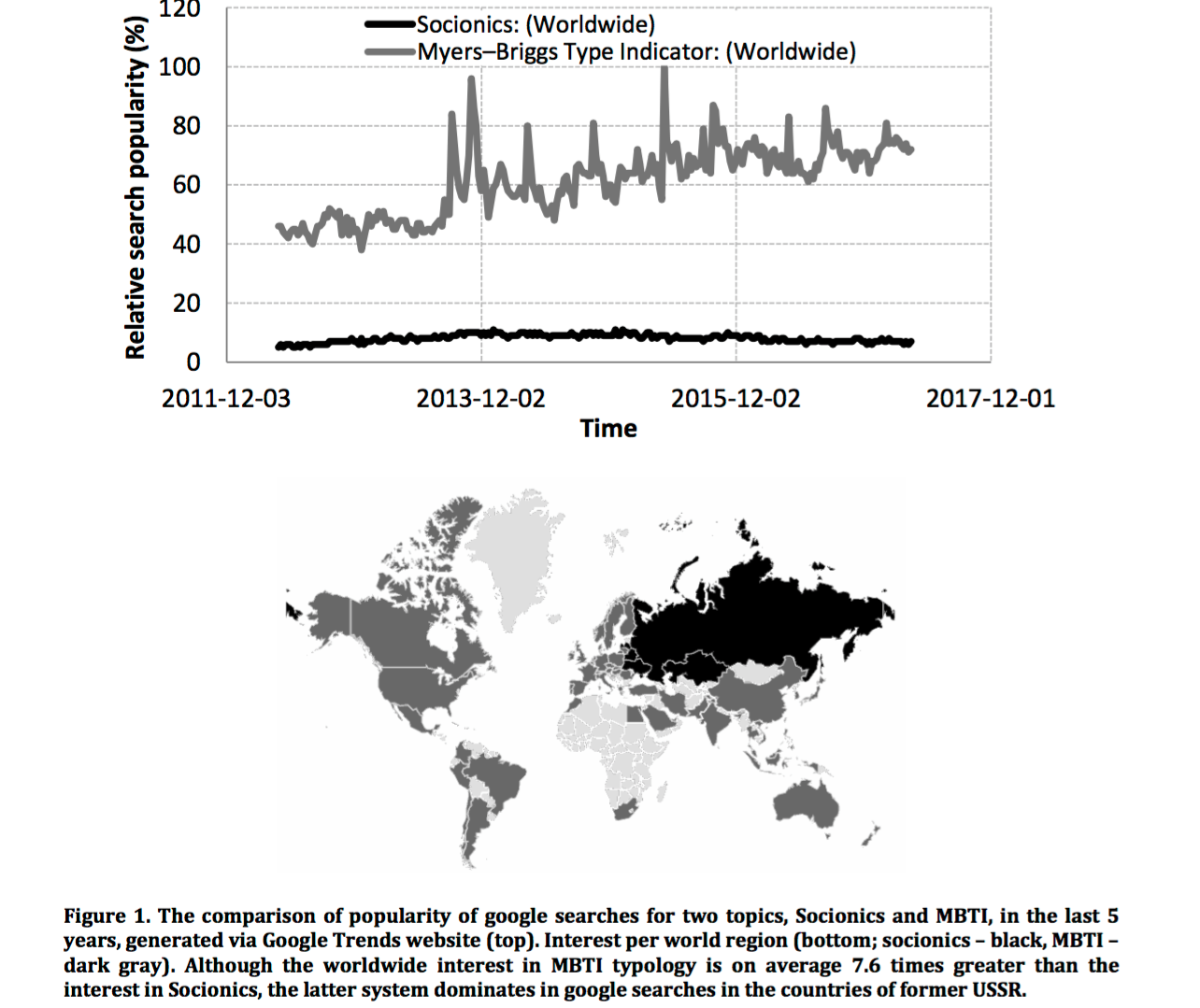
2. Prerequisites
2.1 Jungian functional model
The starting point for socionic considerations is Carl Jung’s concept of 4 functions of the psyche (Jung, 1946). Jung built his understanding on the main discovery of Sigmund Freud – the identification of conscious and unconscious side of the psyche. In Jung’s view, the activities of the psyche can be described by functions such as sensing, intuition, thinking and feeling (brief descriptions of these functions are given in section 2.2). By the analysis of his patients and various historical figures, Jung concluded that usually one of these functions is strongly differentiated in an individual (however not by a purposeful selection), and developed better than the others, because of adaptation to the environment. He called this function the dominant function. It is used highly consciously, as opposed to remaining three. Among the latter, he identified one auxiliary function – less conscious than dominant, but acting as its main support.
Relative search popularity (%)
Furtherly, he inferred that, because of one-sided development (the focus on the dominant function), one or two functions are necessarily retarded, and can be called inferior. In his view, inferior function (or functions, if two) is placed very far in the unconscious – the person can be unaware that such ways of perception or judging are possible, which does not mean that these functions are not affecting her overall behavior. Conversely, they do act but remain hidden (Blutner & Hochnadel, 2010).
Based on Jung’s observations, Isabel Myers suggested a more systematic functional model (Myers, 1962). She proposed that there is only one highly unconscious inferior function and a tertiary function which is moderately unconscious, and developed a bit better than the inferior. Jung’s original reasoning was more flexible. He emphasized that some universal principles and tendencies are visible in the structures of different psyches, but there is quite broad room for exceptions and deviations from that scheme. For example, in some individuals, none of the functions is highly differentiated (they lack dominant function). Disorders in the functional structure of the psyche were seen by Jung as the source of psychological problems. In general, he stated, a person is naturally fitted to possess one specific functional type, either sensory, intuitive, thinking or feeling. If other type is forced upon a person due to external influence, she likely becomes neurotic in the future, and the cure is possible only through identification of proper dominant function.
Carl Jung also identified two preferences concerning the source of psychic energy (the psychological force which gives us the drive to do anything; Freud called it the libido and associated it with the sexual motivation, but Jung extended Freud’s understanding of it and added other sources like the need for sacrum and transcendence). Psychic energy can be acquired from the external world or from the inner world of a person. If the energy level of the psyche increases due to external motivation, e.g. dealing with other people and objects, such direction of energy flow is called extraverted (from Latin: extra – outside, vertere – turning; “turning outside” {for energy}). On the contrary, if the level of energy increases as the result of dealing with own sensations, intuitions, thoughts and feelings, such direction of energy flow is called introverted (from Latin: intro – inside, vertere – turning). As Jung suggested, the individual usually prefers one source of energy, inner or outer, while the opposite one is suppressed. These two orientations can be paired with 4 mental functions, to give two versions of each function – extraverted and introverted, respectively. Such reasoning yields 8 functions. Keeping in mind that in people, typically one function more developed than others, 8 personality types can be distinguished (Jung, 1946).
The types may be discerned further into 16 types, if the auxiliary function is considered. In Jungian personality theory, this function is usually classified as conscious, while tertiary and inferior functions are seen as unconscious (Pascal, 2009). Isabel Myers interpreted Jung’s writings and came up with the conclusion that auxiliary function must be opposite in version to the dominant function (Myers, 1962). One can infer intuitively, that it is necessary for a person, to have both introverted and extroverted function in the
conscious part of the psyche, as without this condition the person would not be able to consciously gain energy from both sources – inner and outer. When dominant and auxiliary functions of the person are determined, the position of two other functions becomes determined also. The inferior function must be of opposite version to the leading function. If one direction of energy flow is developed (with the development of the dominant function), then the other is left without much attention. Therefore, an extroverted type has introverted function as inferior, and vice versa.
Let us notice that functions are paired in accordance with to their task – sensing and intuition are two functions which task is making observations about the world. Importantly, as emphasized by Jung, they do not overlap. It means that observations made by intuition are of completely different nature than sensing. The same can be said about evaluations made by thinking and feeling. The focus on leading function and its development results in suppressing of the other function of the pair. It means that a type with leading sensing has inferior intuition, and vice versa. By the same principle, developed thinking results in inferior feeling. Additionally, it is also logical to assume that if one of the conscious functions makes observations (is sensing or intuition), the other one should make evaluations (be thinking or feeling). Only in such configuration, there will be potential for mutual support.
2.2 Jung’s understanding of 4 functions
In Jung’s view, the psyche makes observations of reality only through sensing and intuition. Sensing relies on senses. It only shows that something is present – an image, sound, smell, taste, touch – it makes no further mental operations upon the qualia. Intuition also allows to know that something is, without raising conclusions or reflecting – as these are the tasks of thinking and feeling. If one knows something which is not confirmed by sensory experience, it is known thanks to intuition. The source of such belief is not explicit. Thinking and feeling are used to operate on observations made by intuition and sensing. Thinking is the sharp blade of logic. It allows to differentiate elements, compare them, identify patterns and repetitions, causes and effects, and formulate relevant judgments. It uses cold analysis, without the consideration of feelings. The principles upon which feeling function makes its judgments are of fuzzy nature. The premises are not clear. Frequently, the verdict of feeling is illogical, yet a feeling type relies upon it.
Let us emphasize an important quality of Jung’s model. The functional division of the psyche is complete. All activities of the psyche are manifestations of one of the 4 functions – there cannot be activity which does not belong to one of them. Analogically, any activity of the psyche is characterized by extraverted or introverted attitude.
2.3 Kępiński’s information metabolism
Carl Jung’s functional description of the psyche was the basis upon which Aušra Augustinavičiūtė proposed her system, describing the processing of information by an individual psyche as well as interactions between multiple individuals. The idea of
considering the psyche as an information processor of stable structure, was inspired by works of Polish psychiatrist and philosopher Antoni Kępiński. In his books, Kępiński introduced the notion of information metabolism (IM). In brief, he reasoned that as living organism metabolizes matter (which he referred to as energy elements) while retaining macroscopically unchanged structure, its psyche metabolizes information, while the higher level structure of the psyche remains unchanged (Kępiński, 2012, 2014). By metabolism he understood accepting elements from the outside world and expelling metabolic products. In case of information metabolism, the individual reacts to perceived information, and this reaction is the feedback information to the outside world. English-speaking readers may refer to works of Kokoszka (Kokoszka, 1993, 1999), Kokoszka et al. (Kokoszka, Bielecki, & Holas, 2001) and Bielecki (Bielecki, 2015) for an in-depth discussion on this concept.
3. Information elements – the fusion of Kępiński and Jung
We live in the world of animate and inanimate objects. When compared with non-living objects, which tend to merge with surroundings and blindly obey the principle of increasing entropy, living organisms are much more complex, and tend to form separate systems (open systems, as understood by von Bertalanffy (von Bertalanffy, 1950)), which oppose themselves to the rest of the world. They also are the reflection of the rest of the world, that is – all of its complexity is mirrored in their bodies and psyches (Augustinavičiūtė, 1998). Despite the presence of the boundary between the living being and the external world, life is possible only if a constant the exchange of energy and information occurs (from the perspective of the organism) (Kępiński, 2012).
Everything that happens in the observable reality, including our own bodies, may be reduced to energy changing its forms. To refer to this process, Kępiński used the term energy metabolism (EM) (Kępiński, 2012). Assume that the psyche is observing some event. Any change of energy – a unit act of EM – is accompanied by generation of some information (e.g. if some object moved, exploded, collided with other object – we can notice the change). Augustinavičiūtė chose to define the units of information metabolism as corresponding to specific transformations of energy. To find out what these energy transformations might be, an object that is representative of all existing objects should be considered. Consideration of inanimate objects only is too narrow, as the psyche deals with much more complex objects like people, their emotions and needs (also of its own). Therefore, an analysis of energy transformations during the activity of human body would be appropriate. The founder of socionics compared living organism to the internal combustion engine and to a bouncing elastic ball (Augustinavičiūtė, 1998). These analogies are presented below.
For any activity of an organism there must be potential energy within it. It is contained in its structure, like chemical energy stored in a fuel, or potential energy of elasticity contained in a squeezed rubber ball. Augustinavičiūtė assigned the symbol () to this
energy state. Next stage is the release of potential energy of the object, its conversion into kinetic energy – the process of mobilization. This stage is dynamic and includes the change of the internal structure of the object. It corresponds to the compression of the fuel-air mixture, or the return of elastic ball to its unsqueezed shape. This dynamic act of EM was assigned the symbol (). At some point, considered object reaches the moment of maximal mobilization, where it has greatest kinetic energy. It corresponds to ignition moment in the internal combustion engine, or the ball just after the decompression, and at the start of its upward motion. This phase of EM is assigned symbol (). The last stage of this cycle is work. Combusted mixture expands and is able to move the cylinder. The ball can overcome the Earth’s gravitational pull and jump off the floor. As work is done, the kinetic energy of the body decreases. This is a dynamic stage and was assigned symbol ().
Humans also act in accordance with abovementioned stages. If the person is at rest, there is the potential of action () which can be realized if she gets excited. The internally mobilized state is referred to as (), while the change from potential to usable energy is (). Accomplishment of some goal consumes energy. It also requires thinking – for example planning an appropriate sequence of actions or applying tools. In the process, the person gets tired. In physics, it is called work (). Please note that these are phases of EM, but by observing them, the psyche learns, obtains information. Each change in the body itself or in its position is not only an act of energy metabolism, but also an informational signal to surrounding living beings. This is the coupling of EM and IM as pointed out by Kępiński. The contribution of Augustinavičiūtė lies in a skillful division of observed energy transformations (form physics perspective, all is energy; existence consists of its ongoing transformation) into such EM phases, which are coupled with IM phases corresponding to 4 Jungian functions. Apparently, she succeeded.
As a matter of fact, if Jungian point of view is adopted, the information about potentials of objects is indeed acquired by intuition, and specifically by its extraverted version (Ne). The information on releasing this potential, increasing the readiness to action, is related to extroverted feeling (Fe). Consequently, the information about the object in its full explicit power is obtained by extroverted sensing (Se), while the information about work done by objects in physical world is obtained through extraverted thinking (Te). There is one apparent inconsistency, as Jung pointed out that input to the psyche is only via sensing and intuition, and not thinking or feeling. Indeed, thinking and feeling work on the stimuli received through senses or intuition. But here, the information obtained through Te or Fe is considered as something which of course has basis in some sensory inputs and intuitions, yet without the focus on them, but on the further reflections.
For completeness, there is the need to tell about the introverted side of things, as only extraverted versions of functions were mentioned till now. As noticed by the originator of socionics, introverts think not in terms of objects and what happens to them, but in
terms of relationships between objects. Especially, the relation of oneself to the external world is considered. To refer to relations, Augustinavičiūtė utilizes the notion of field taken from theoretical physics. Celestial bodies interact mostly from afar due to fields. The field is a sum of relationships of one body with other bodies. It becomes clear if we imagine a particle. We cannot say if it has some electric charge (and therefore the electric field around) unless we put another charged particle nearby. Only then we can observe if the particles attract, repel each other, or if nothing happens. Therefore, the concept of field is somehow identical to the concept of relationship. Now, let us consider that any transformation of energy of an object – e.g. motion, excitation, deceleration, work – is accompanied by some change in the surrounding fields. Some object might have changed its position in space, so its spatial location in reference to other objects have changed. The person might get excited or depressed, and thus her energy level changes relatively to some other person or people. Therefore, every element of EM (and IM) referring to objects, can be assigned a corresponding element related to fields.
Among object-elements, there are 2 static and 2 dynamic elements. In Jungian model, the functions are characterized by symmetries, so symmetry is also expected between object- and field-elements. The first object-element is potential energy () and it is static. The field version of this element is denoted by white triangle (), and it refers to the dynamics of the field of potential energies of objects. Potentials possessed by various objects may unfold in the future. This element is associated with time, as time is the manifestation of happenings which previously were mere potentials. This element is dynamic as it describes the process of unfolding, and relational as it describes the field. It corresponds to Jungian introverted intuition (Ni).
Now let us think of the field version of element (). It will be denoted by white symbol of the same shape (). The process of internal mobilization of the object is dynamic,
therefore the field-element associated with it should be static, by the law of symmetry. Living organisms become motivated to action due to the feeling of attraction towards (or repulsion from) something. Kępiński hypothesized that this is the first phase of information metabolism, connected with feelings and emotions, which allow to formulate the initial attitude of the organism towards its surroundings (Kępiński, 2014). Such feeling of attraction or repulsion can be seen as a static moment (still snapshot) of (). Therefore, () is the static field of attraction/repulsion (between all objects, with the emphasis on the place of oneself in it).
Explicit state of energy is (). It is manifested for example in the external shape of objects or their explicit strengths. Its field-element is dynamic and denoted by white circle (). This is the dynamics of relation between explicit energy states of objects. If Jungian functions are considered, it is related to introverted sensing (Si).
The field-element associated with work is related to Jungian introverted thinking (Ti). As work () is dynamic and requires purposeful procedures, the information about explicit statics of relations between objects () is needed to avoid chaotic and thus
useless actions. Treating objects as aggregates of static (frozen) properties allows for their comparisons and classification (Kępiński, 2013).
As before, any field-element of EM implies the existence of associated IM element. In summary, Augustinavičiūtė classified the information received by the psyche into two categories:
(1) sensations that are formed into perceptions and bring information about the qualities and condition of objects (black elements of IM);
(2) sensations that are formed into impressions and bring information about the fields (white elements of IM).
The quality of received information depends on both the characteristics of external stimuli and the quality, strength, development, and training of the personal information- receiving system. At this stage, it is worth to mention that various authors gave slightly different definitions of IM elements. Even Augustinavičiūtė’s definitions changed from paper to paper, yet still the qualities that these descriptions try to convey were always the same. In some socionic papers, descriptions of IM elements involve a lot of examples, which is good for beginners and people with weaker intuition (Eglit, 2010). At the same time, such descriptions can be too specific, and the all-incorporating level of generality may be lost.
4. Model A
4.1 Introductory considerations
When IM elements are defined, one can think of the way in which psyche processes information. Augustinavičiūtė used Jung’s observations again and reasoned that one of elements must be processed by some sort of dominant function. There must be also second, auxiliary element, of different type. If dominant function works on black element (objects), the auxiliary function must work on white (fields), and vice versa. It agrees with the observation that change in the object causes an immediate change in field. The psyche is likely to function in such way – first observe, then adjust something or first adjust, then observe reality’s reaction. It is also understandable that if that one of two major functions are related to sensing or intuition, the other should be feeling or thinking (and vice versa, just like in MBTI system). In conclusion, Augustinavičiūtė proposed that there are blocks in the psyche, composed of one white and one black element. Freud divided the psyche into ego, superego, and id (Freud, 1915, 1920, 1923), which was her initial choice for the names of these blocks. Augustinavičiūtė knew the writings of Jung, who argued that psyche acts indeed as two separate systems – relatively independent personalities, that is – the conscious one, and the unconscious one (Pascal, 2009). She also kept in mind that the changes of energy in the real-world form cycles. The conclusion was that psyche is formed of two separate cycles of information metabolism – conscious and unconscious. As all activities of the psyche are
described by Jungian functions, therefore these cycles should contain all 8 IM elements. There must be also place for entities identified by Freud as ego, superego and id.
4.2 Mental ring
The conscious cycle may be built starting from elements placed in dominant and auxiliary function. Assume we have an individual with dominant () and auxiliary (). These form one block of IM, which corresponds to Freudian ego – conscious and strong formation of personality. Another thing which can be brought relatively easy into consciousness is the super-ego. Super-ego (meaning the one that supervises ego) reflects internalization of information forced by society, the cultural rules. It is often taught by parents and educators. People typically use such learned norms when the problem involves their weakness, that is – some kind of weak psychic function. In such situation, it is easier to refer to social norms on given subject, then to come up with the solution of our own. Augustinavičiūtė concluded that this block is weak and formed of remaining two IM elements that have the same dynamics as ego block. In our example, the ego block contains two static elements (), then the super-ego must also be static (). In such way, the conscious cycle of IM metabolism was specified. It was called the mental ring and its graphical representation for one of the 16 possible arrangements is given in Figure 2.

The full cycle of IM consists of two blocks – ego and superego, and four phases I-IV. In each phase, it is considered how first element influences the next one (in accordance with the direction of the arrow). Augustinavičiūtė’s proposed that, the first element in each block can be named accepting, as it lies in the function which primarily accepts information from the outside world. With this function one perceives what is the state of reality. This perception is so strong that is sometimes felt as fusion or union with the reality being reflected. In Ego block, dominant function is accepting. The other function in the block is referred to as producing. Producing functions are also able to accept information about reality, yet their primary focus is creative – they formulate the answer to the image of reality perceived by the accepting function. For example, in block it is processed how the explicit properties of object () result in explicit relations of other objects with it. To change the relations, the properties of object must be changed. Such block is called extraverted (due to the type of the element in its first function). In an introverted block, e.g. , it is processed how relations of object with other objects affect the object itself. The first element is taken as given, and the second as adapting to the first. These principles manifest in real people. Let us consider individuals of type (types in socionics are denoted by elements processed by their dominant and auxiliary functions). These individuals hold the view that the strongest person sets the rules. The introverted type is different. Her/his ego block processes how relations affect the object. For example, if such person holds the position of ordinary teacher, she/he is quiet, modest and scrupulous. Chosen to be the principal, she/he likely becomes a dictator (Augustinavičiūtė, 1998).
Functions of superego block were called role and vulnerable function. Role function is the 3rd in the order of processing (for the exemplary type shown in Figure 2 it processes element ). Due to the order, it is an accepting function, and due to the placement in the Superego block, it is weaker in differentiation than the dominant function. Its name reflects the fact that the individual sees the element processed by this function as something important form the point of view of others and tries to adjust to these expectations by developing this function and demonstrating her or his skills in this area. The need for improvement and good command of this element can be seen as a role imposed by reality. Vulnerable function is 4th in the order of processing. Its efficiency is even weaker than that of role function because being a producing function it mainly formulates responses using the inputs of already weak 3rd function. Contrary to accepting functions, which reflect the objective image of reality, producing functions create new qualities, not present in the objective world. Conclusions constructed by a weak function upon incomplete information delivered by another weak function are likely to be of questionable quality. Correction of mistakes consumes time. The incompleteness of information inputs from the external world and frequent mistakes are the reasons due to which the 4th function is the bottleneck of the mental ring. The information metabolism undergoes a significant deceleration at this point.
4.3 Vital ring
By mental ring, the part of the psyche which submits to conscious attention is understood. Speaking form these functions, the person usually controls what she says (except for cases of mental disorder), and knows what she feels. There is the ability to act purposefully. The other cycle of IM in the psyche is unconscious and was named vital, as it works in the background and secures basic needs of the organism (from Latin vitae – life). It is known due to Jung that the unconscious contains instincts, archetypes and complexes (Pascal, 2009). Archetypes act as a sort of software supporting basic orientation in reality, whereas the instincts provide fast reactions in life-threatening situations, and assure continuity of the existence of organism. The activity of vital ring is strongly bonded with the body, while mental ring is more related to mind.
It is already known that the unconscious ring should contain 4 elements. If all elements of the mental ring are static, then all elements of the vital ring must be dynamic, and vice versa. The most natural selection to start the unconscious cycle of IM is the inferior function (it will be denoted by number 5). Inferior function should process the element
of version (extraversion/introversion) opposite to that placed in the dominant function, which is the logical implication of the imbalance caused by the focus on dominant function. Moreover, sensing in dominant function implies intuition in the inferior function (and vice versa). Analogical rule holds for thinking and feeling (as explained earlier in section 2.1). In the case of type , whose mental ring is described in previous section, the inferior function is (). It should be in one block with black element (as explained before). The most obvious selection is (), which is the extroverted version of element located in the vulnerable function. The block that is built in such way is unconscious and weak. Even if the second function of the block was strong (in current example – the one processing ), the overall performance of the block would be degraded by the presence of inferior function. In socionics, the inferior function was treated as accepting function, and was given the name suggestive function. The other function residing in the same block was called mobilizing function (number 6), and the block itself was named superid (meaning: the one that supervises id).
Let us explain these names. As this is the block of unconscious weaknesses, the individual reacts very positively to help in these areas. The level of automation of these functions is high, and capabilities are low, therefore the person can be easily manipulated using information of this type. Comprehensive and accurate judgments about that information cannot be performed. Due to these all characteristics, the block describes the childlike sphere of the psyche. Especially exposed to suggestivity is the accepting function, which tries to establish union with the objective world. The name of mobilizing function is related to its special placement in the vital ring. It is weak, but when given clear external information, it can induce acceleration in the remaining section of the vital ring (functions 7 and 8, see Figure 3 and Figure 4).
As we exhausted all other options, functions 7 and 8 must contain other versions of elements from dominant and auxiliary functions. For example, in the case of considered type , function 7 is occupied by IM element (), and function 8 by (). The block formed by these functions is referred to as id block. The characteristic of function 7 is that the information it processes is at most times ignored by conscious attention. Due to that, the adopted name of the function is the ignoring function. The reason of its behavior is simply the differentiation and power of dominant function which processes very similar information, although represented in different way. The information about objects can be translated to information about relationships between them, and vice versa. Yet, the individual avoids such translations if there is no overwhelming need to think in terms of element processed by function 7. Irina Eglit (Eglit, 2010) pointed out that the psyche uses information of this type in situations of self-defense. These uses are highly instinctual and belong to the self-preserving programs of the unconscious. There is very little control over these manifestations, and the responses are very fast.
Last function of the vital ring – function 8, or demonstrative function – works in one block with the ignoring function and therefore is somehow dependent on the inputs from the latter. At the same time, as a producing function it is more flexible and less
involved in the scanning of reality. The element it processes is qualitatively congenial with the element occupying the auxiliary function. That relationship results in the fact that the information element processed by function 8 is not seen as something important. This type of information is already handled skillfully by the ego block. If other people try to convey this type of information it is seen by the ego as obvious and even boring. However, at the unconscious level the person frequently relies on the outputs of demonstrative function and use them in the personal sphere. This function is often used to alleviate dangers in the environment noticed by ignoring function.
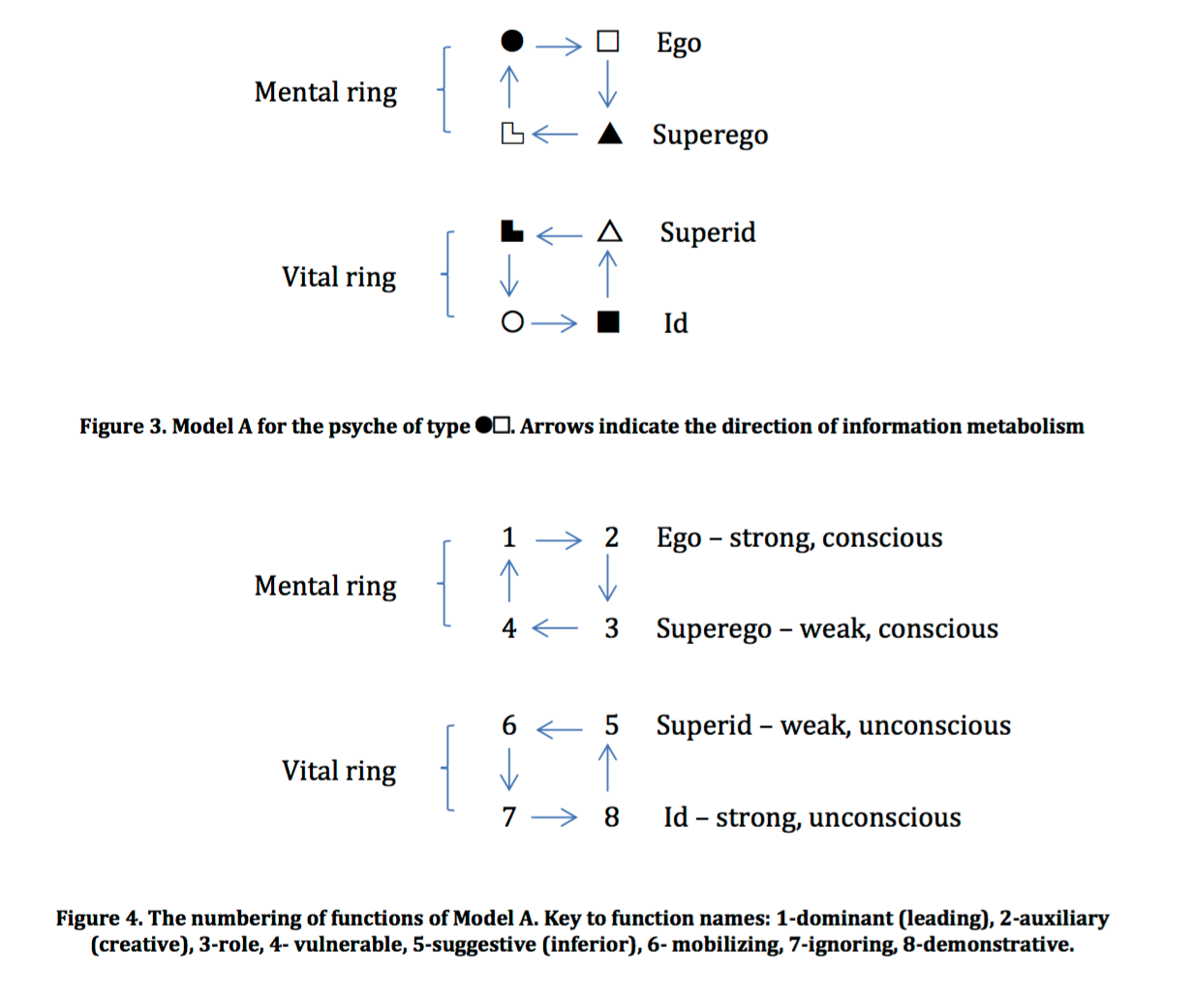
Let us extend the model of the psyche (referred to as model A, after the name Augustinavičiūtė) presented in Figure 2 by adding the elements processed by the functions of the vital ring, following the considerations presented so far. The extended model for the type is presented in Figure 3. The general schematic of model A is presented in Figure 4. The hypothesis of Augustinavičiūtė was that any psyche is accurately described by this framework. Just like in MBTI typology, there is 16 possible variants or types resulting from the presented theory. These variants are constructed
based on possible variants of elements blocked in dominant and auxiliary functions. Dominant function (often referred to as leading function), may process any of 8 IM elements, while the elements allowed in auxiliary functions are selected by the same rules as in Jungian typology. The location of remaining 6 elements is then automatically determined, by following the principles presented in this and previous sections.
It is worth to mention the role of weak blocks (Superego and Superid). As IM is sequential and the functions are codependent, the level of development of weak functions and the quality of information to which these functions are exposed, are the factors limiting the quality of IM in the whole psyche. Because of that, weak blocks must be considered as control blocks. The bottleneck character of function 4 in the mental track was already explained. For the vital track, the real throttle is function 5 (the suggestive function). Without proper information input, it can slow down metabolism in the vital ring. Similar statement is true for function 6. These dependencies can be easily combined with Kępiński’s views, which explained mental illnesses as disorders in the information and energy metabolism of an organism. When his theory is considered, socionics model gains the explanatory potential in the field of psychology of disorders.
Due to specific roles held by different functions, 16 qualitatively different intertype relations exist. The theory if intertype relationships may be found in the collected works of Augustinavičiūtė (Augustinavičiūtė, 1998). Distinct quality of that theory is the fact that it can be easily described in terms of mathematics, similarly to other Jung-based personality theories, see e.g. (Blutner & Hochnadel, 2010). Socionics predicts that interactions between some agents (types) have beneficial influence on the metabolism of information in both agents, while there are also relationships which result in suppressing of the information metabolism in both or just in one of them (asymmetrical relationships). Relationships in which IM is suppressed are unfavorable in the light of Kępiński’s observations about the bond between information metabolism and mental wellness. Apart from one-to-one relationships, the dependencies between agents in multi-agent groups can be predicted. The correspondence of these predictions to effects observed in real humans is the current topic of socionic experiments, e. g. (Reinin, 2005).
5. Discussion
Transformations of energy – the changes in the external reality – are acquired by us through all 5 senses. In this respect, material objects manifest not only as visual qualia, but also as sounds, smells, tastes and bodily sensations. Any of the senses can be considered as possessing its own space and time dimensions. The socionic model does not describe how these external stimuli are integrated into information about objects or their relations that is later processed in the mind. The focus is clearly on information that is already pre-processed by lower-level cognitive structures. In this regard, socionics is closer to analytical psychology than to cognitive science. On the other hand,
it offers some hypotheses about the control flow in the psyche. According to them, the efficiency of information processing and even the overall mental health can be controlled by the exposition of weak functions to compatible (or incompatibile) forms of information (information elements). In this respect, socionics model is interesting from the point of view of systems science and cybernetics.
The notion of object is a separate philosophical problem. When we consider what is treated by the psyche as an object and what is not, the hypothesis is that extraverted types (the ones possessing object-element in the dominant function) tend to pre-process information to give it the form of perceptions, thoughts, feelings and sensations concentrated around certain points of focus (which is a wider category than just physical objects with clearly traced boundaries). On the other hand, the introverts are more likely to initially organize incoming information into information about relationships between these points of focus. Such point of focus may be a concept, a remembered place or event. Thus, the definition of extraversion/introversion in socionics is significantly different than that of Carl Jung.
Attentive reader has noticed that the names of functional blocks – ego, superego, id and superid are borrowed from Freud, but this connection should be rather treated as a naming convention than the statement of full correspondence. Another issue arises due to abstract and problematic definitions of information elements. Over time, abstract definitions proposed by Augustinavičiūtė were reformulated by her and other thinkers. For thorough and friendly explanations of information elements the reader may consult the book of Eglit (Eglit, 2010). In fact, the aspects of information represented by these elements are closely related to the areas of operation of corresponding Jungian functions, but on the other hand they have distinctive properties like statics and dynamics. These novelties and nuances cause difficulties in application of socionics in psychometrics. Nevertheless, the Russian-speaking part of the world prefers to use this typology over other Jung-based approaches, which is the proof of its great potential.
Jung was careful with his conclusions about the structure of the psyche. He emphasized great complexity of that mechanism and its diversity in different people. In his view, the traits like extraversion/introversion or conscious and unconscious should be treated as fine scales, where intermediate strengths of these qualities are possible, and not as simple binary oppositions. Yet, even if binary values are assigned to specific functions within Model A, the integrated effect of this whole system is indeed not binary, but differentiated. On the other hand, some initial simplifications had to be made in order to propose a fixed framework.
The aim of socionics is not only to propose a simplified structural model of the psyche that submits to logical analysis, but also to explain misunderstandings in communication between people in terms of their typological differences and information metabolism. These misunderstandings find logical explanations within socionics framework. The
theory of intertype relationships is broad, and due to that its full presentation is not attempted within the scope of this paper.
6. Summary
Lack of good studies on the foundations of socionics, available to English-speakers, was the main reason for writing this paper. It presents the derivation of socionic model of information metabolism in the human psyche, which is largely based on original writings of Aušra Augustinavičiūtė. Before explanation of the rationale behind the model, prerequisite works of Jung and Kępiński are described in a nutshell, with the focus on main concepts used in socionics. The implications of the structure of the psyche and information exchange as hypothesized by Augustinavičiūtė are outlined. The place of socionics in the field of personality psychology and cognitive sciences is briefly discussed. As presented in the paper, socionic model is a convenient systematic way to describe dynamics of the mind. It also has predictive potential in the field of relationships between type representatives and mental diagnostics, yet a more elaborate discussion on this topic is left for another occasion.
7. Literature
Augustinavičiūtė, A. (1998). Socionics, vol. 1. Introduction (in Russian). St. Petersburg: Terra Fantastica.
Bielecki, A. (2015). The general entity of life: a cybernetic approach. Biological Cybernetics, 109(3), 401–419. https://doi.org/10.1007/s00422-015-0652-8
Blutner, R., & Hochnadel, E. (2010). Two qubits for C.G. Jung’s theory of personality. Cognitive Systems Research, 11(3), 243–259. https://doi.org/10.1016/j.cogsys.2009.12.002
Eglit, I. M. (2010). Socionic type identification (in Russian). Moscow: Black Squirrel. Freud, S. (1915). The unconscious. SE, 14, 159–204.
Freud, S. (1920). A general introduction to psychoanalysis. New York: Boni and Liveright. Freud, S. (1923). The ego and the id. SE, 19, 1–66.
Jung, C. G. (1946). Psychological Types. London: Kegan Paul, Trench, Trubner & Co. Kępiński, A. (1972). Psychopathology of neuroses (in Polish). Warsaw: PZWL. Kępiński, A. (2012). Schizophrenia (in Polish). Cracow: Wydawnictwo Literackie. Kępiński, A. (2013). Psychopathies (in Polish). Cracow: Wydawnictwo Literackie. Kępiński, A. (2014). Melancholy (in Polish). Cracow: Wydawnictwo Literackie. Kokoszka, A. (1993). Information metabolism as a model of consciousness. The
International Journal of Neuroscience, 68(3–4), 165–77. Retrieved from http://www.ncbi.nlm.nih.gov/pubmed/8063522
Kokoszka, A. (1999). Information metabolism as a model of human experiences. The International Journal of Neuroscience, 97(3–4), 169–78. https://doi.org/10.3109/00207459909000658
Kokoszka, A., Bielecki, A., & Holas, P. (2001). Mental Organization According to the Metabolism of Information Model and its Mathematical Description. International Journal of Neuroscience, 107(3–4), 173–184. https://doi.org/10.3109/00207450109150684
Myers, I. B. (1962). The Myers-Briggs Type Indicator: Manual (1962). Palo Alto: Consulting Psychologists Press. https://doi.org/http://dx.doi.org/10.1037/14404- 000
Pascal, E. (2009). Jung to live by. New York: Grand Central Publishing.
Reinin, G. (2005). Socionics. Typology. Small groups (in Russian). St. Petersburg: Education-culture.
Vincent, J. F. V, Bogatyreva, O. A., Bogatyrev, N. R., Bowyer, A., & Pahl, A.-K. (2006). Biomimetics: its practice and theory. Journal of the Royal Society, Interface / the Royal Society, 3(9), 471–82. https://doi.org/10.1098/rsif.2006.0127
von Bertalanffy, L. (1950). The Theory of Open Systems in Physics and Biology. Science, 111(2872). Retrieved from http://science.sciencemag.org/content/111/2872/23







